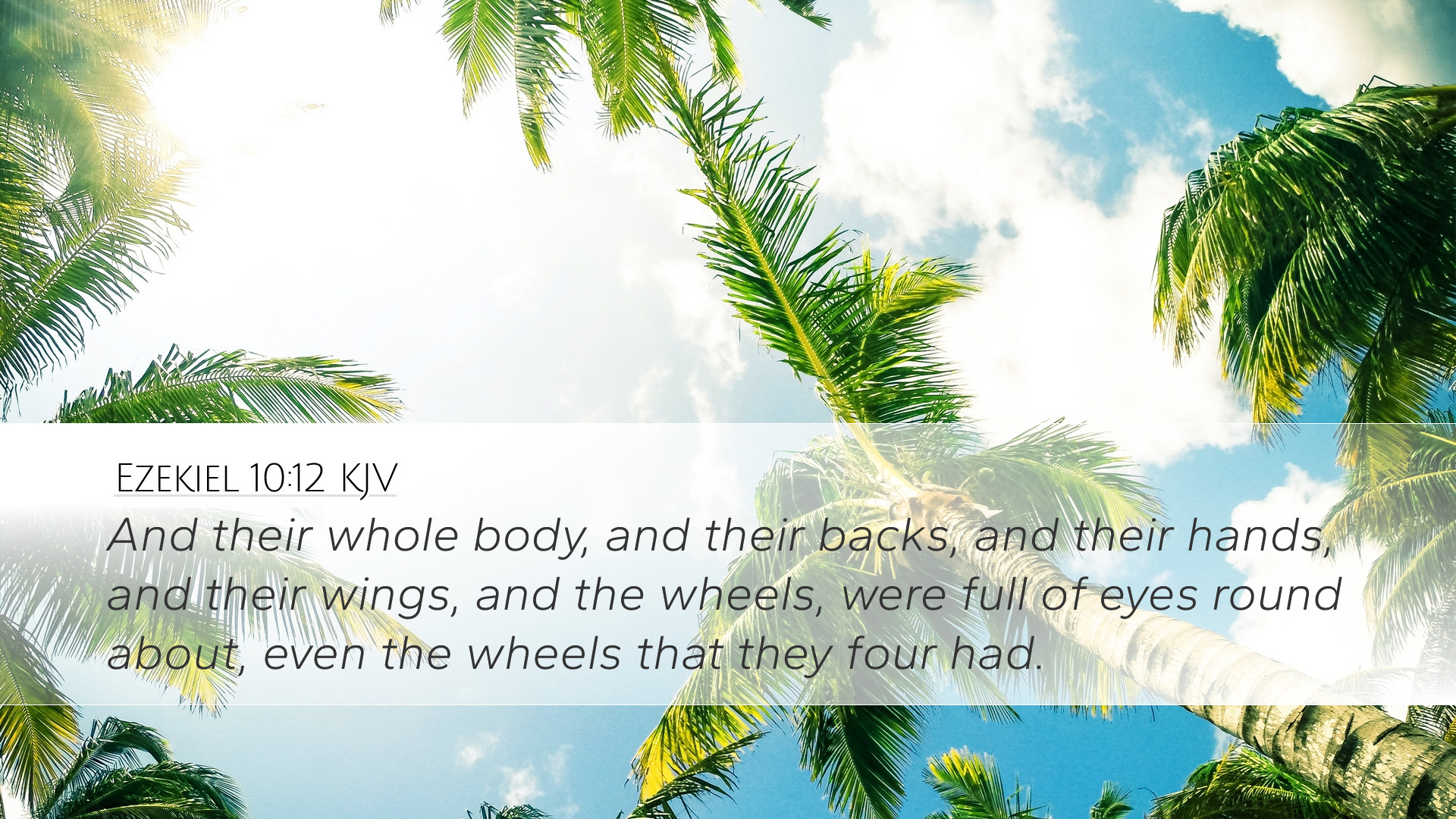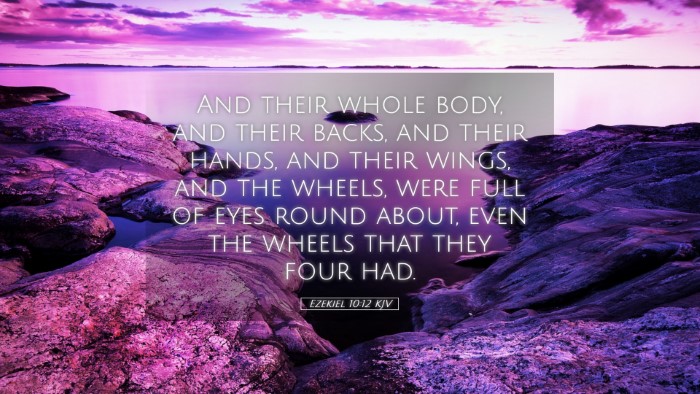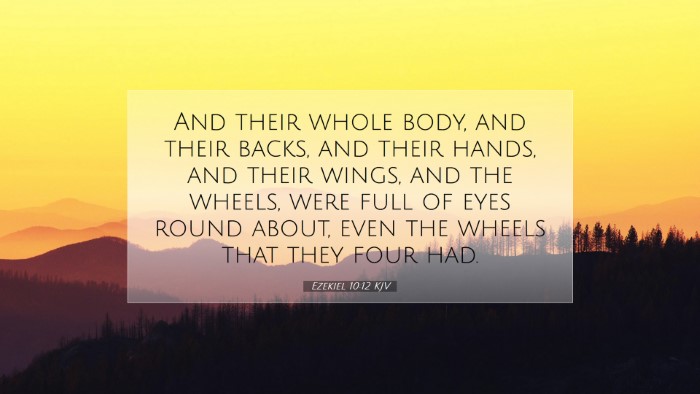Bible Commentary on Ezekiel 10:12
Bible Verse: Ezekiel 10:12 - "And their whole body, and their backs, and their hands, and their wings, were full of eyes round about, even the wheels that they four had: and they four had one likeness; and their appearance and their work was as it were a wheel in the middle of a wheel."
Introduction
The verse Ezekiel 10:12 is a continuation of the dramatic vision given to the prophet Ezekiel regarding the glory of the Lord and the intricate details of the celestial beings known as cherubim. This commentary synthesizes insights from renowned public domain commentaries, exploring both the imagery and implications of this profound scripture.
Contextual Background
Ezekiel's ministry was marked with vivid visions and symbolic acts, aimed at conveying God's messages to a people in exile. In chapters 10 and 11, he receives a vision of God's glory departing from the temple in Jerusalem, symbolizing judgment and impending destruction. Understanding the context is critical as it highlights the importance of God's presence and the seriousness of Israel's sin (see Matthew Henry).
The Details of the Vision
Full of Eyes
Matthew Henry emphasizes the significance of the eyes on the cherubim: "The eyes signify knowledge and understanding. The innumerable eyes indicate that nothing is hidden from the Lord, who sees all things." This detail reflects God's omniscience, revealing that divine awareness extends beyond human comprehension.
Body Parts and Their Symbolism
The mention of the body, backs, hands, and wings full of eyes, as noted by Albert Barnes, suggests that every aspect of these beings is interconnected with the divine purpose. Each part symbolizes an attribute of God—omnipotence, omnipresence, and omniscience—all working together. This vision encapsulates both the majesty and the mystery of the heavenly realm.
Wheels Within Wheels
Adam Clarke provides an in-depth interpretation of the phrase "a wheel in the middle of a wheel." He states that this symbolizes the complexity and intricacy of God’s design in creation and providence, signifying both mobility and stability in God's plans. The wheels demonstrate how divinity operates in perfect harmony, transcending human understanding.
Theological Implications
The imagery in Ezekiel 10:12 contains profound theological implications for understanding God and His creation:
- Divine Sovereignty: The multifaceted nature of the cherubim and their accompanying wheels illustrate God’s supreme control. He not only knows all but orchestrates every event according to His divine will.
- Holiness of God: The intricate design of the cherubim emphasizes God’s holiness. The multitude of eyes suggests that His judgment is precise and thorough, reflecting His nature as both just and merciful.
- God’s Omnipresence: The wheels signify God's movement and activity throughout creation, asserting His presence everywhere, even in judgment.
- Vision of Hope: Although the context is one of impending judgment, the vision also portrays God’s ultimate plan for restoration, promising a future where His glory will again dwell among His people.
Practical Applications
For pastors, theologians, and students of the Word, Ezekiel 10:12 encourages several practical applications:
- Awareness of God’s Presence: Reflecting on God's omnipresence can help believers cultivate a constant awareness of His presence in their lives.
- Emphasis on Holiness: The holiness depicted in this passage serves as a reminder to pursue holiness in personal and communal worship.
- Recognition of God’s Sovereignty: Understanding God’s sovereign control over history and individual lives offers reassurance in times of uncertainty and impending judgment.
- Encouragement for Evangelism: The vision points to God's ultimate plan for restoration, motivating believers to share the gospel with urgency and hope.
Conclusion
Ezekiel 10:12 serves as a powerful reminder of the awe-inspiring nature of God and His workings within the world. Through the rich imagery of the cherubim and their celestial wheels, believers are called to acknowledge God's omniscience, holiness, and sovereignty while finding comfort in His ultimate plan for redemption. Engaging with this text deeply enriches theological understanding and inspires a responsive life of worship and service.


